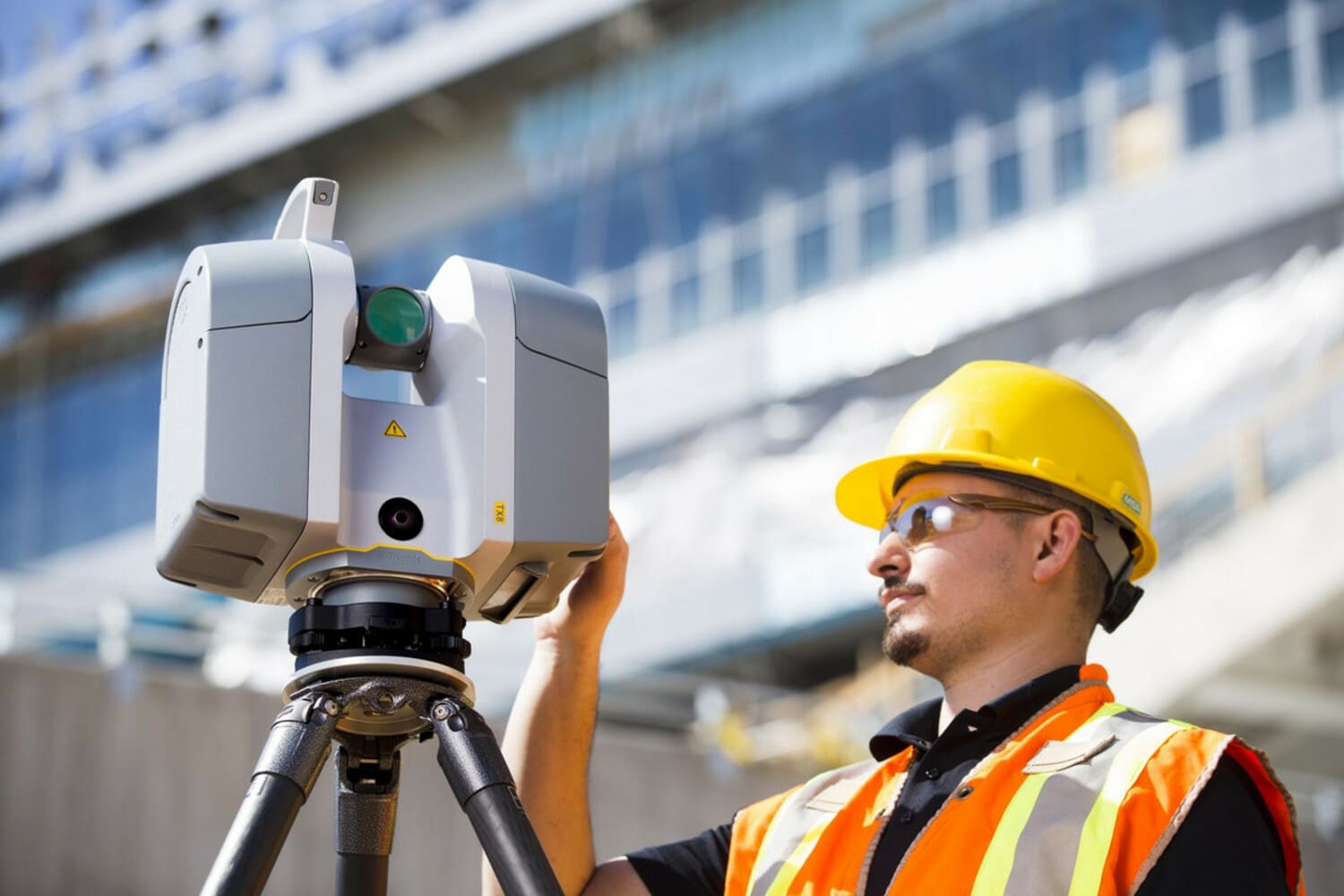Building Information Modeling (BIM) laser scanning has revolutionized the construction and architectural industries. It is a highly sophisticated process that enables professionals to create detailed three-dimensional models of buildings and structures. The accuracy of BIM laser scanning (3D laser scan-to-BIM)is paramount to achieving successful project outcomes.
Overview of BIM 3D Laser Scanning
3D laser scan to BIM works by emitting laser beams to capture millions of data points on a structure’s surface. These data points are then compiled to create a detailed and accurate 3D model. The technology involved in 3D laser scanning includes laser scanners, GPS, and specialized software to process the data. Applications of this technology are vast, ranging from building renovations and historical preservation to infrastructure development and urban planning. Moreover, 3D laser scanning for BIM is an invaluable tool for professionals seeking to improve communication, streamline workflows, and enhance project management.
The Accuracy of BIM Scanning
The accuracy of 3D laser scanning is one of its most significant benefits. It ensures precise measurements, which are crucial for project success. Several factors contribute to the accuracy of 3D laser scanning for BIM applications:
- Precision: 3d laser scanning technology offers unmatched precision by capturing intricate details with exactitude, even in complex structures and surfaces where traditional surveying methods may falter. This precise capture translates to 3D models that mirror the real-world building with accuracy, ensuring architects and engineers can rely on the fidelity of the model for planning, analysis, and retrofitting projects.
- Consistency: The consistency afforded by 3D laser scanning technology marks a significant advancement over traditional surveying. By mitigating human error and providing uniform measurement methods, 3D laser scanning ensures that the data collected is repeatable and reliable across different time frames and project teams, which is essential for maintaining the integrity of long-term construction projects.
- Flexibility: 3D Laser scanning can measure complex and irregular shapes that are often challenging or impossible to measure accurately with traditional methods.
- Speed: BIM laser scanning can capture millions of data points in a matter of minutes, ensuring rapid data collection without compromising accuracy.
Additionally, 3D laser scan to BIM can capture hidden or hard-to-reach elements of a structure that might be missed with traditional measurement methods. This comprehensive data collection is essential for informed decision-making and successful project execution. Furthermore, the 3D models created from the scanned data can be used for various purposes, such as virtual walkthroughs, project visualization, and facility management. The technology can also be integrated with other tools and software, such as virtual reality, to enhance the user experience and provide even more valuable insights.
However, several factors can affect the accuracy of 3Dlaser scanning, such as the quality of the equipment used, the experience and expertise of the operator, and environmental conditions. To mitigate these potential issues and ensure accurate results, it is crucial to choose reputable 3D laser scan to BIM companies with experienced professionals and high-quality equipment.
Challenges and Solutions
Despite its numerous benefits, 3D laser scanning for BIM can present some challenges. One of the most common challenges is managing the vast amounts of data generated. Processing and interpreting this data can be time-consuming and requires specialized software.
However, the benefits of 3D laser scanning far outweigh these challenges. Solutions to common challenges include utilizing cloud-based storage and processing solutions to manage data more efficiently and leveraging the expertise of skilled professionals who specialize in BIM laser scanning.
Cost and Budgeting for BIM Laser Scanning Services
The cost of 3D laser scanning services can vary depending on the size and complexity of the project, as well as the specific requirements of the client. Some BIM scanning companies may offer fixed rates, while others may charge hourly. Additional costs, such as travel expenses for onsite scanning, may also apply. When budgeting for 3D laser scanning services for BIM applications, it is essential to consider all potential costs and consult with multiple service providers to obtain accurate quotes.
Conclusion
BIM laser scanning is a valuable tool that has revolutionized the construction and architectural industries. Its accuracy, precision, and speed have made it an indispensable resource for professionals seeking to achieve successful project outcomes. While there are challenges associated with 3D laser scanning, the benefits far outweigh the drawbacks. By leveraging the expertise of skilled professionals and utilizing advanced technology, construction professionals and architects can harness the power of 3D laser scanning for BIM to achieve accurate and precise measurements for their projects.
ㅤ ㅤ ㅤ ㅤ ㅤ ㅤ ㅤ ㅤ ㅤ ㅤ ㅤ ㅤ ㅤ ㅤ ㅤ ㅤ ㅤ ㅤ ㅤ ㅤ ㅤ ㅤ ㅤ ㅤ ㅤ ㅤ ㅤ ㅤ ㅤ ㅤ ㅤ ㅤ ㅤ ㅤ ㅤ ㅤ ㅤ ㅤ ㅤ ㅤ ㅤ ㅤ ㅤ ㅤ ㅤ ㅤ ㅤ ㅤ ㅤ ㅤ ㅤ ㅤ ㅤ ㅤ ㅤ ㅤ ㅤ ㅤ ㅤ ㅤ ㅤ ㅤ ㅤ ㅤ ㅤ ㅤ ㅤ ㅤ ㅤ ㅤ ㅤ ㅤ ㅤ ㅤ ㅤ ㅤ ㅤ ㅤ ㅤ ㅤ ㅤ ㅤ ㅤ ㅤ ㅤ ㅤ ㅤ ㅤ ㅤ ㅤ ㅤ ㅤ ㅤ ㅤ ㅤ ㅤ ㅤ ㅤ ㅤ ㅤ ㅤ ㅤ ㅤ ㅤ ㅤ ㅤ ㅤ ㅤ ㅤ ㅤ ㅤ ㅤ ㅤ ㅤ ㅤ ㅤ ㅤ ㅤ ㅤ ㅤ ㅤ ㅤ ㅤ ㅤ ㅤ ㅤ ㅤ ㅤ ㅤ ㅤ ㅤ ㅤ ㅤ ㅤ ㅤ ㅤ ㅤ ㅤ ㅤ ㅤ ㅤ ㅤ ㅤ ㅤ ㅤ ㅤ ㅤ ㅤ ㅤ ㅤ ㅤ ㅤ ㅤ ㅤ ㅤ ㅤ ㅤ ㅤ ㅤ ㅤ ㅤ ㅤ ㅤ ㅤ ㅤ ㅤ ㅤ ㅤ ㅤ ㅤ ㅤ ㅤ ㅤ ㅤ ㅤ ㅤ ㅤ ㅤ ㅤ ㅤ ㅤ ㅤ ㅤ ㅤ ㅤ ㅤ ㅤ ㅤ ㅤ ㅤ ㅤ ㅤ ㅤ ㅤ ㅤ ㅤ ㅤ ㅤ ㅤ ㅤ ㅤ ㅤ ㅤ ㅤ ㅤ ㅤ ㅤ ㅤ ㅤ ㅤ ㅤ ㅤ ㅤ ㅤ ㅤ ㅤ ㅤ ㅤ ㅤ ㅤ ㅤ ㅤ ㅤ ㅤ ㅤ ㅤ ㅤ ㅤ ㅤ ㅤ ㅤ ㅤ ㅤ ㅤ ㅤ ㅤ ㅤ ㅤ ㅤ ㅤ ㅤ ㅤ ㅤ ㅤ ㅤ ㅤ ㅤ ㅤ ㅤ ㅤ ㅤ ㅤ ㅤ ㅤ ㅤ ㅤ ㅤ ㅤ ㅤ ㅤ ㅤ ㅤ





